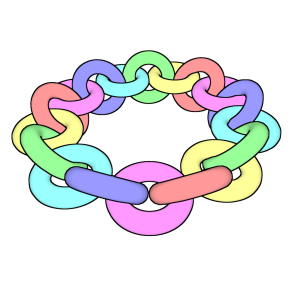At the beginning of the 20th century, Jacques Hadamard gave the definition of well-posed problems, with a view to classifying “correct” mathematical models of physical phenomena. Three criteria should be fulfilled: a solution exists, that solution is unique, and it should depend continuously on the parameters.
This point of view has led to the foundation of the functional analysis approach to the resolution of partial differential equations, which was developed during the last century and is commonly accepted nowadays. The continuous dependence on the parameters means that a small change will not affect the outcome noticeably. Its immediate consequence is that inferring cause from effect, that is, parameters from measurement, is an ill-posed problem – the opposite of a well-posed problem.
Elliptic boundary value problems, such as the conduction equation, are well-posed problems. The voltage potential depends continuously on the imposed boundary condition, and even analytically (the smoothest possible dependence) on the conductivity parameter of the material inside the object. Electrical Impedance Tomography is the corresponding ill-posed problem. A current is imposed on the surface of the object to be imaged, and the resulting voltage potential on the surface of the object is measured. The target parameter to be reconstructed is the internal impedance. It is an appealing imaging method, as it is non-invasive, non-destructive, and the equipment required is inexpensive. But this problem is severely ill-posed : a small error on the measurements can result in a very large error on the reconstructed impedance.
To address this difficulty, the so-called hybrid imaging methods have been developed. In Acousto-Electric Tomography, one creates internal perturbations of the impedance of the medium to be imaged by an acoustic pulse. Because these perturbations are controlled, they provide additional data that reduce very significantly the ill-posedness of the problem. In a recent book, Yves Capdeboscq and his former Oxford student Giovanni Alberti explore the mathematics of these hybrid problems and the corresponding reconstruction methods. They show that this problem has deep connections to the Rado-Kneser-Choquet Theorem for holomorphic functions of the complex variables, and how structures such as Antoine's necklace create additional difficulties in three dimensions. Quasi-static approximations prove unhelpful in such a case. But time is on our side.


